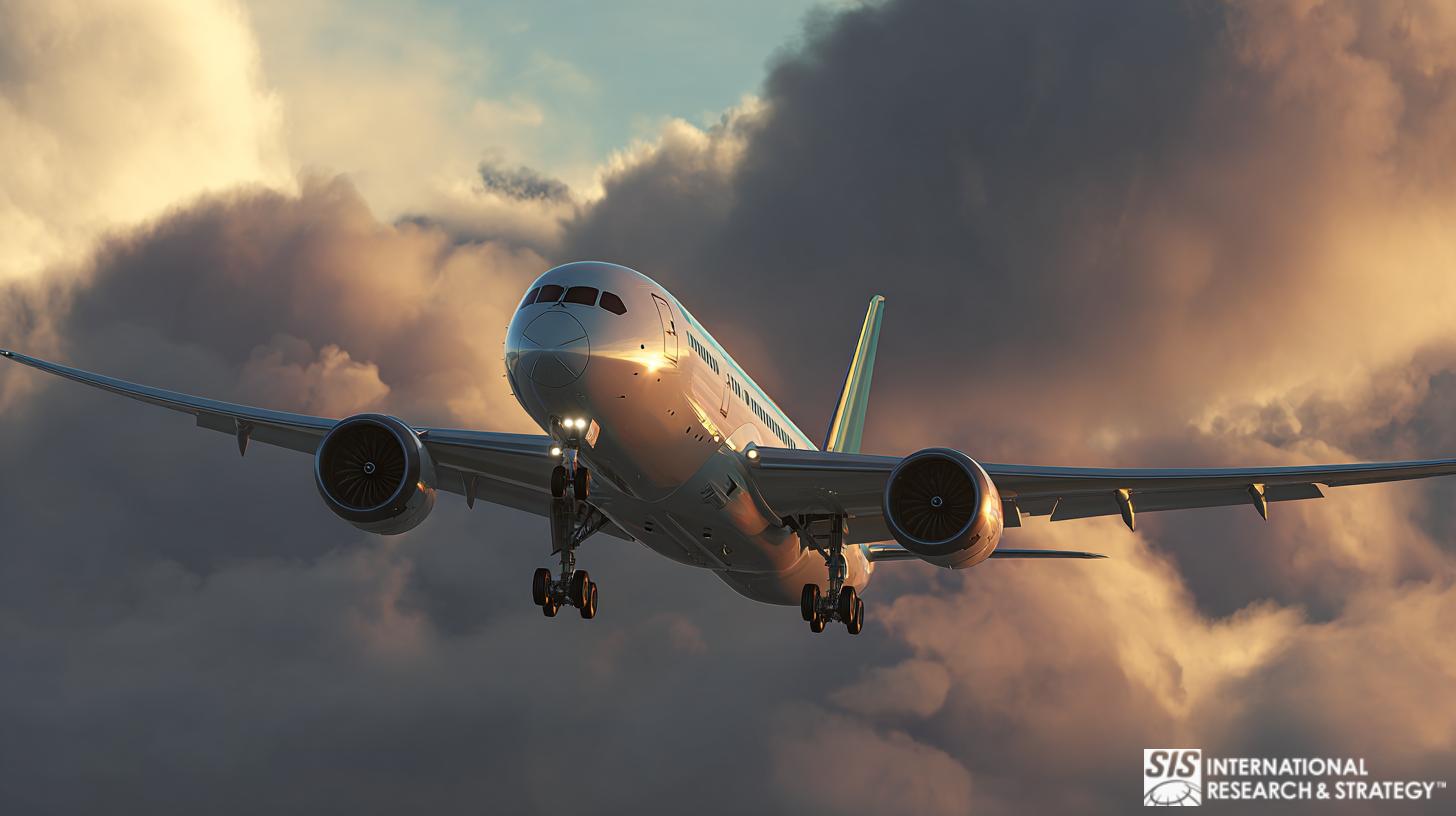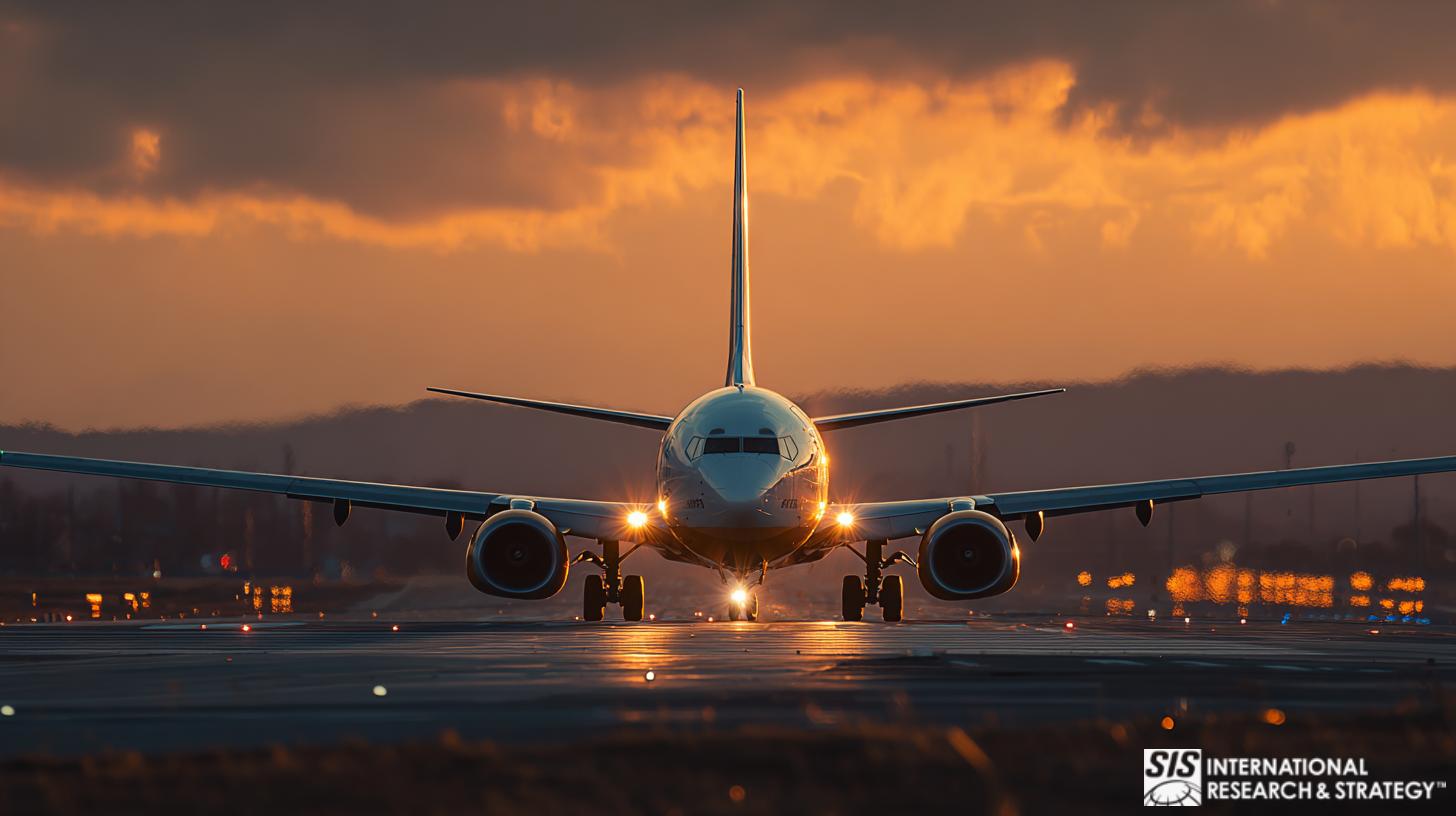
The aeronautics industry is a main contributor to national security, commerce, and transportation. It is considered as a technology driver that leads to spin-offs of advanced technology products and comprised of three major sectors: airframe, engine, and equipment.
The market is composed of civil aeronautics of aircraft used for domestic commerce and civilian air transport, and military aeronautics includes air arms for the military aviation of countries.
Luft- und Raumfahrtmarkt der Vereinigten Staaten
Since World War II, U.S. aircraft, engines, and parts have dominated the domestic and foreign markets for subsonic transports, general aviation, commuter, and military aircraft. US technology and products are also the drivers for the development of global transportation infrastructure like airports and air traffic management systems.
Derzeit leistet die Luftfahrtindustrie den größten positiven Beitrag zur US-Handelsbilanz. Sie spielt eine entscheidende Rolle bei der Aufrechterhaltung der Sicherheit und des Komforts des Flugverkehrs weltweit und leistet einen wichtigen Beitrag zur Verteidigung der US-Interessen, da sie auch die entlegensten Teile der Welt anfliegt.

Die Boeing Company
The Boeing Company is one of the largest manufacturers of commercial jetliners and military aircraft. It designs and manufactures rotorcraft, electronic and defense systems, missiles, satellites, launch vehicles, and advanced information and communication systems, and operates Space Shuttle and International Space Station for NASA, and provides military and commercial airline support services. It operates in more than 90 countries around the world and is one of the largest U.S. exporters in terms of sales.
Boeing is headquartered in Chicago and employs more than 160,000 people across the United States and in 70 countries. Currently, it is expanding product lines and services developing more commercial airplanes, military platforms, defense systems, and the war fighter through network-centric operations; creating advanced technology solutions that reach across business units; e-enabling airplanes and providing connectivity on moving platforms; and arranging financing solutions for our customers.
Europas Luft- und Raumfahrtmarkt
The region is presently struggling to keep pace with the strong increase in mobility and demand. However, the region is the main competitor of the US in terms of air travel over medium and long-haul routes. EU states are now increasing their funding to support and fund research initiatives to meet market demands and grab potential opportunities in the industry.
Airbus SAS
Airbus ist ein führender Flugzeughersteller, dessen Produktlinien vom Schmalrumpfflugzeug A318 mit 100 Sitzplätzen bis zum A380 mit 525 Sitzplätzen reichen, dem größten derzeit im Einsatz befindlichen Zivilflugzeug.
Airbus hat seinen Tätigkeitsschwerpunkt im Bereich militärischer Transportflugzeuge mit dem unter der Leitung von Airbus Military produzierten Mehrzweck-Militärtransportflugzeug A400M begonnen, das ab 2009 die alternden Flotten von C-130 Hercules und C-160 Transalls ersetzt. Darüber hinaus sind Tankflugzeuge für die Luftbetankung und Transportmissionen in Flugzeugvarianten erhältlich, die auf den Modellen A310 und A330 basieren.
Aufkommende Technologien
Zu den jüngsten Forschungsschwerpunkten in der Luftfahrt zählen Nanotechnologie, Entwicklungstests und -bewertung, netzwerkzentrierte Kriegsführung, intelligente Systeme und umweltverträglicher Lufttransport.
Energieoptimierte Flugzeug- und Gerätesysteme
Air craft technologies are related to the design and integration of energy-consuming Aircraft Equipment Systems (AES). These systems are located under the floor, inside wings, and behind panels, essentially ensuring performance, safety, and controllability.
Bei neuen Flugzeugkonfigurationen werden verfügbare Komponenten und die Integration dieser Systeme weiterentwickelt, um Möglichkeiten für eine höhere Effizienz in Bezug auf Folgendes zu schaffen:
- Umgebungskontrolle und alle Aspekte des Wärmemanagements
- Schutz der Flugsteuerung gegen Eis und Regen
- Fahrwerk und Bremsen
- Electrical, hydraulic, and pneumatic generation and distribution
- Hilfs- und Notstromerzeugung
- Flugzeug-Kraftstoffsystem
- Motorunterstützung
- Beleuchtung, Kabine und Wasser/Abfall
Nanotechnologie
Zu den aktiven Forschungsbereichen der Luftfahrtindustrie zählen Nanogeräte und -systeme, Nanoelektronik, Nanofertigung, Nanomaterialien, Nanosensoren sowie die Umwelt-, Gesundheits- und Sicherheitsaspekte der Nanotechnologie. Aktuelle Forschungsaktivitäten umfassen die Fähigkeit, mehrere „Nano“-Disziplinen zu kombinieren, um neue, synergetische Anwendungen der Nanotechnologie zu schaffen.
Die US-amerikanische National Nanotechnology Initiative ist ein Bereich, in dem die Nanotechnologie das Potenzial hat, eine Fülle von Innovationen zu ermöglichen, insbesondere in den Bereichen Materialien/Strukturen und intelligente Bio-Nanomaterialien in der Luftfahrt.
Umweltfreundlicher Luftverkehr
Die gemeinsame Technologieinitiative „Clean Sky“ bringt europäische F&E-Akteure zusammen, um umweltfreundliche Fahrzeugdesigns, Motoren und Systeme zu entwickeln und so die Umweltauswirkungen künftiger Lufttransportsysteme zu minimieren.
Technologies will directly aim for the reduction of the amount of carbon dioxide (CO2) emitted by air transport, cutting specific emissions of nitrogen oxides (NOx) by 80% and decreasing noise levels. The targets reflect the Ultra Green High Level Target Concepts developed by the Advisory Council for Aeronautical Research in Europe (ACARE). Other focus areas include the reduction of soot, water vapour, and particulate emissions through alternative fuels; aircraft engine configurations, intelligent low-weight structures, improved aerodynamic efficiency, airport operations, and air traffic management as well as manufacturing and recycling processes.
Asiens Luft- und Raumfahrtmarkt
Relative to Europe and the Americas, Asia’s security situation is increasingly fluid. Emerging superpowers, weapons proliferation and nuclear tensions are key movements in the defense industry.
Increased nuclearization among Emerging Markets, particularly China, India, Pakistan, and Iran, has created geopolitical tensions and new demands for defense offerings. Meanwhile, political calls are growing in developed nations for collaborative efforts toward reduced nuclearization.
Conversely, weapons imports have grown dramatically in Southeast Asia over the past few years. Malaysia, Singapore and Indonesia are leading the growth with triple and double-digit growth in weapons imports.
In addition, defense budgets in Asia are on the rise. The rise is being led by regional tensions and a desire for more sophisticated technologies. Recently China has publicly announced its advanced capabilities to destroy ballistic missiles and demonstrated its defense capabilities in space.
Analysts expect increased demand from Asian governments. Asian companies may continue collaboration with established defense companies primarily in developed nations for cutting-edge weapons development.
Western aerospace and defense giants have emphasized their offerings of unmanned systems, aircraft, energy systems and cyber technology to, what industry giants consider one of their most important markets. While leadership in the defense industry is led by developed nations, industry observers are increasingly curious when Asia will be able to take a greater role in developing weaponry on a larger, more self-sufficient scale.
Branchenthemen
Sicherheit und Lebensqualität
September 11, 2001 has shown the vulnerability of the air transportation system and the need for improved security. The long-term trend of growing numbers of commercial air operations demands a further reduction in the currently low rate of air transport accidents. Aviation safety and security pose numerous challenges to security personnel, operators, and aircraft designers. The public and aircrews must be protected both in the air and on the ground from danger and injury.
Belegschaft
A serious problem facing the U.S. aeronautics industry is attracting, educating, and retaining the next generation of aeronautical engineers. The aerospace workforce is aging, and a significant number of people are nearing retirement.
Das Durchschnittsalter der Produktionsarbeiter beträgt im kommerziellen Sektor 44 Jahre, im Verteidigungssektor 53 Jahre und bei der NASA 51 Jahre. Darüber hinaus ist der Anteil der Arbeiter, die 30 Jahre oder jünger sind, um fast zwei Drittel gesunken, von 18 Prozent im Jahr 1987 auf 6,4 Prozent im Jahr 1999. Es gibt zunehmende Befürchtungen, dass die derzeitige Zahl der Studenten im Bildungsbereich nicht ausreicht, um den zukünftigen Bedarf der Luftfahrtindustrie zu decken.

